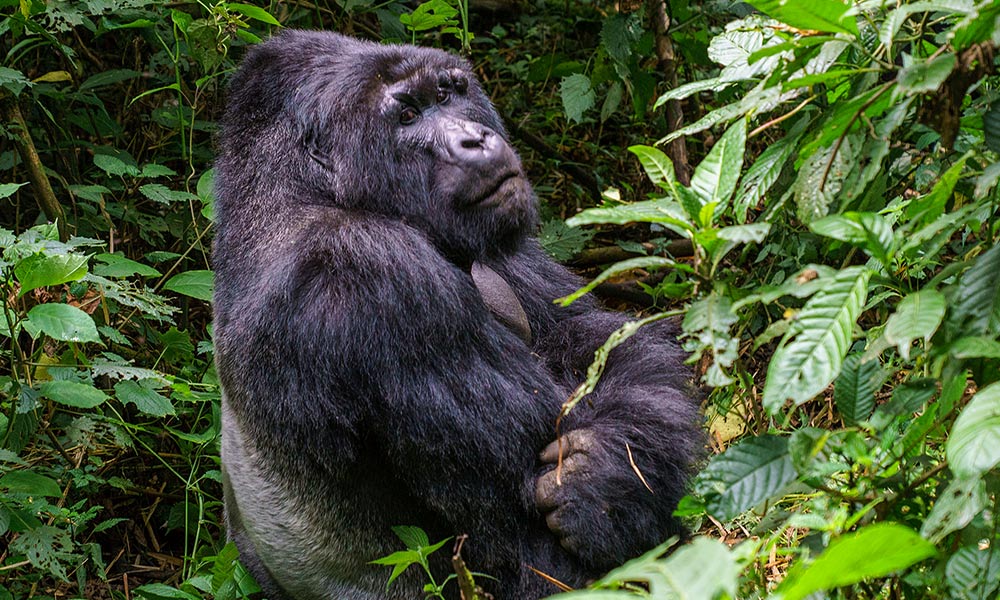The reptiles include crocodiles, lizards, snakes, tortoises, terrapins and turtles. As we have already covered crocodiles in other sections, we will give some brief accounts of the most common lizards, snakes and shelled reptiles you may encounter in the bush.
Lizards
There are around 230 species of lizard in Southern Africa, but due to their quick movements and elusive nature, very few of them are seen. Most lizard species have the remarkable ability to shed their tales when frightened or attacked. The tail is shed as a diversion, and keeps moving whilst the lizard makes its escape.
Lizards, like snakes, also need to shed their skins, as their body outgrows the skin. They generally shed their skins in portions rather than in one go. Their senses are good, with keen eyesight, smell and hearing. They mostly hunt arthropods and the larger lizards may hunt small rodents. There are no venomous lizards in Southern Africa.
Skinks – Scincidae
These smallish, smooth skinned lizards are often seen around lodges amongst the rockeries and chalets, hunting for beetles, spiders and other small prey. Many have short limbs ideal for burrowing, whist some prefer the habitat of trees.
Geckos – Gekkonidae
Unlike other lizards, gekos have fixed eyelids and use their tongues to clean their eyes with. They have sticky pads on their toes that allow them to cling to almost any surface. They are common around game lodges and you may well have a resident geko living in your chalet. They are mainly nocturnal and will pop out at night to hunt for insects and arachnids. They are very useful to have around the lodge as they clear the place of insects!
Snakes – Serpentes
Despite their fearful reputation, only a third of all snakes worldwide are venomous, and then only a small proportion of these are potentially fatal to humans. In Southern Africa there are 160 species of snakes, and only 18 of these are known to be fatal to humans.
Most snakes are passive and elusive creatures, and tourists will not often encounter them in the bush. They can be both diurnal and nocturnal, the diurnal snakes usually having rounded pupils, and the nocturnal snakes having vertically elliptic pupils. They live in a variety of habitats, from burrows, to trees, to water. They are usually coloured for camouflage, both to protect them from predators and to conceal them from their prey.
Snakes have poor vision, seeing in monochrome, and generally only able to discern movement rather than detail. They make up for this in smell senses, using their tongue to transfer scent particles onto their upper mouth, known as the Organ of Jacobson. Snakes do not possess ears, but they are very sensitive to vibrations and will therefore ‘hear’ you coming by feeling the vibrations of your footsteps. Some snakes, such as pythons, also have heat sensory organs that allows the snake to home in on its warm blooded prey.
Snake venom is actually modified saliva, and it is highly complex in its structure, containing a mixture of proteins and polypeptides that are still subject to much scientific research. There are three major categories of venom:
Cytotoxic
This venom causes tissue damage and necrosis. The bites are extremely painful and result in large swelling. Human deaths from cytotoxic bites usually occur from hypotensive shock (increased blood pressure) and fluid loss. But any healthy individual who seeks immediate medical attention is very unlikely to die. Adders have this type of venom.
Neurotoxic
As the name suggests, neurotoxic venom attacks the nervous system, shutting down nervous impulses and causing paralysis and respiratory failure. This venom is carried by the cobras and mambas. Like cytotoxic venom, death will occur if the victim is left untreated.
Haemotoxic
This is a highly potent and dangerous venom, but it is also very rare and occurs only in the boomslang and vine snake, neither of which are aggressive species and bites have primarily been recorded by handlers rather than in the wild. Haemotoxic venom prevents blood coagulation and causes massive internal haemorrhage, leading to failure of the internal organs.
Tortoises, Terrapins, Turtles – Chelonii
All species of the order Chelonii have shells, in fact their taxonomic name means ‘shielded reptiles’. Other common characteristics are their lack of teeth, instead having a beak-like mouth, they all lay eggs and they all have external ear openings.
There are 26 species of chelonia in Southern Africa, and they are divided into terrestrial species (tortoises), marine species (turtles), and fresh-water species (terrapins).
Tortoises – Testudinidae
These are the chelonia you are most likely to encounter in the bush, particularly the leopard tortoise (Geochelone pardalis) which is fairly commonly spotted as it’s the largest tortoise species in Southern Africa, weighing up to 40Kg.
They have a good but short-range sense of smell and generally feed on grasses and succulents. All tortoises need to drink water but they can go without it for long periods. Only the leopard tortoise is able to swim in water.
The sex of all hatchlings is determined by the temperature at which they’re incubated, with more females being produced at higher temperatures.








